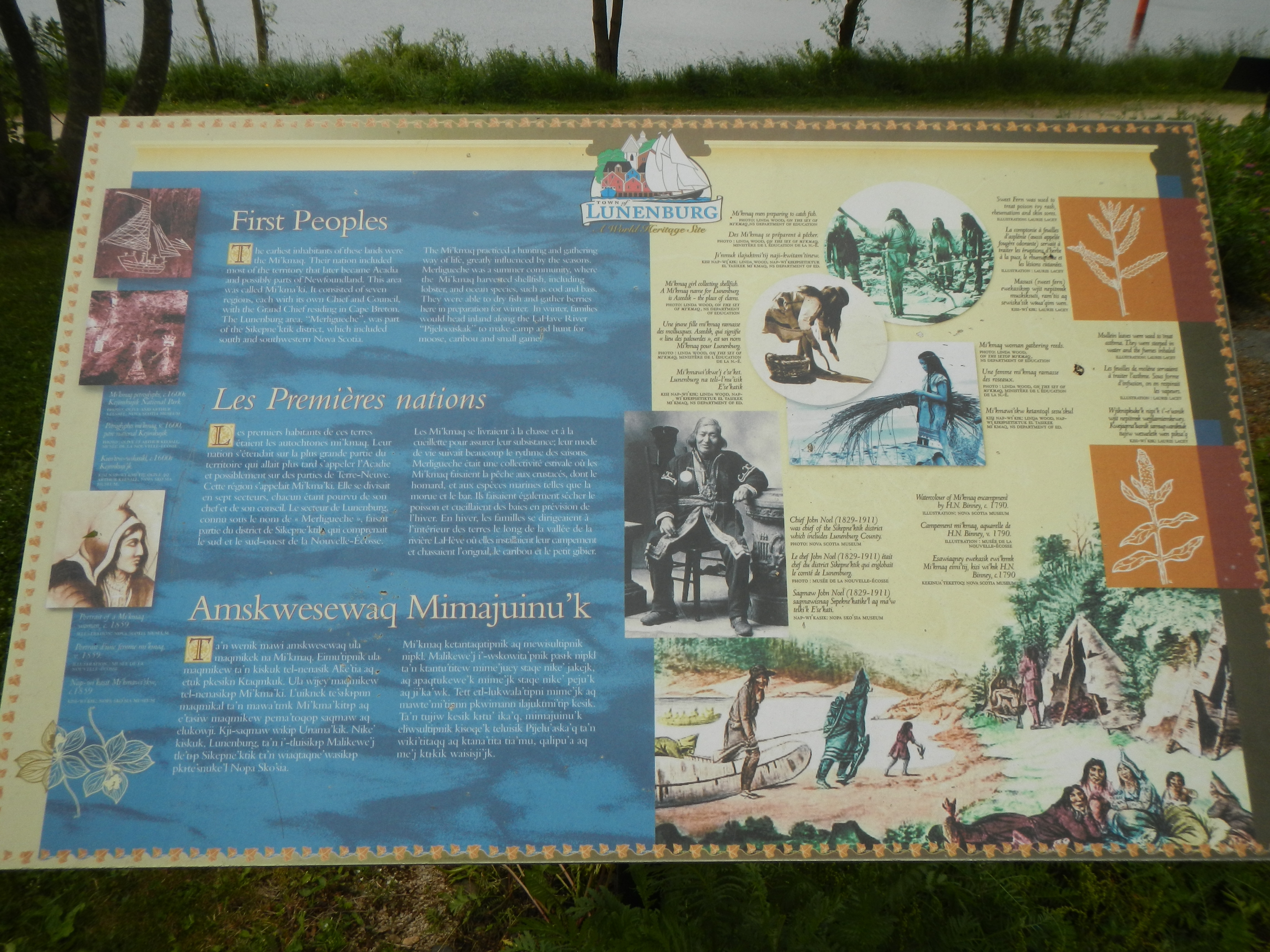Photograph as originally submitted to
this page in the Historical Marker Database
www.HMdb.org.
Click on photo to resize in browser. Scroll down to see metadata.
Photographer: Barry Swackhamer
Taken: June 16, 2014
Caption:
First Peoples Marker | Additional Description: Captions (Englsih / French): (left side, top to bottom) Mi’kmaq petroglyphes, c. 1600s, Kejimkujik National Park, / Petroglyphes mi’kmaq, v. 1600, parc national Kejimkujik.; Portraite of a Mi’kimaq woman, c. 1859. / Portrait d’une femme mi’kmaq, v. 1859; (right side, clockwise from the top left) Mi’kmaq men preparing to catch fish. / Des Mi’kmaq se préparent à pêcher.; Sweet Fern was used to treat poison ivy rash, rheumatism and skin sores. / La comptonie à feuilles d’asplénie (aussi appelée fougère odorante) servait à traiter les éruptions d’herbe à la puce, le rhumatisme et les lésions cutanées.; Mi’kmaq woman gathering seeds. / Une femme mi’kmaq ramasse des roseaux.; Mullein leaves were used to treat asthma. They were steeped in water and the fumes inhaled. / Les feuilles de molène servaient à traiter l’asthme. sous forme d’infusion, on en respirait les vapeurs.; Watercolour of Mi’kmaq encampment by H.N. Binney, c. 1790. / Campement mi’kmaq, aquarelle de H.N. Binney, V. 1790.; Chief John Noel (1829-1911) was chief of the Sikepne’ktik district which includes Lunenburg County. / Le chef John Noel (1829-1911) était chef du district Sikepne’ktik que englobait le comté de Lunenburg.; Mi'kmaq girl collecting shellfish. A Mi’kmaq name for Lunenburg is Aseedik - the place of clams. / Une jeun fille mi’kmaq ramasse des mollusques. Asseedik, qui signifie «lieu des palaurdes» est un nom Mi’kmaq pour Lunenburg.
Submitted: October 25, 2014, by Barry Swackhamer of Brentwood, California.
Database Locator Identification Number: p290076
File Size: 3.624 Megabytes
To see the metadata that may be embedded in this photo, sign in and then return to this page.
